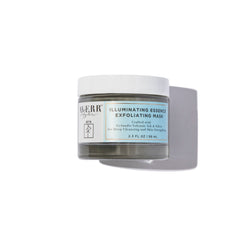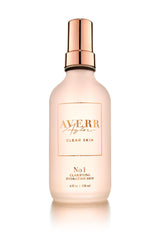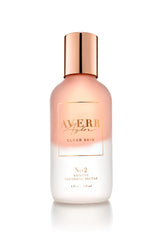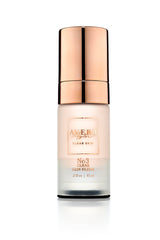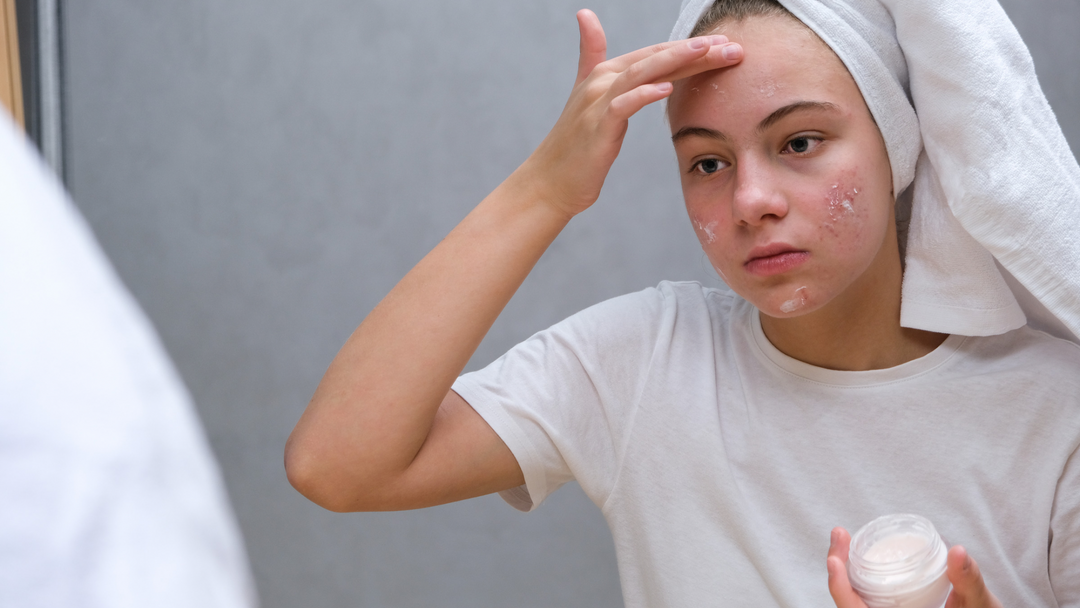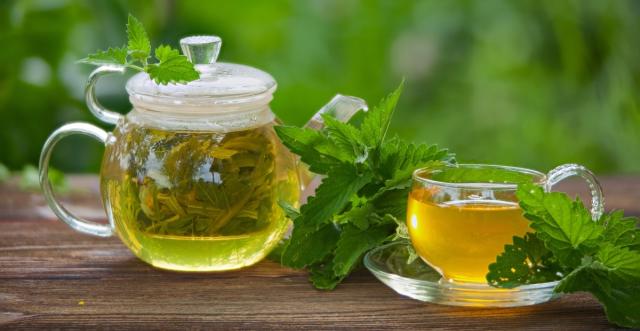Acne and I go back a long time, all the way back to the hormone-steeped halls of middle school. And by now, I'd say that we've gotten to know each other pretty well.
For example, what are my acne triggers? Well, I know that acne likes to visit me right before lady week each month. And acne knows how much I love chocolate, never missing an opportunity to punish me with a breakout. I even realized that my glasses were causing acne – and I can’t see without them!
Over our many breakout-studded years together, I tracked patterns until I thought I had my acne triggers all figured out.
Sugar. Makeup. PMS.
Pretty standard, right?
...But what about those occasional surprise breakouts? You know, the ones that appear out of nowhere, with no discernible cause?
Or there are those stubborn flare-ups that reappear again and again, no matter how you treat them or try to clean up your lifestyle. What are you missing?
You may think you know all your breakout triggers already…but guess again.
This article covers 21 causes of adult acne that you won't believe!
But First, What IS Acne?
Well, un-scientifically, the cause of acne is pretty simple: dead skin cells, sebum, and bacteria goop together and clog your pores, causing an infection in the skin. That’s the bottom line, and it’s pretty gross, right? If you’re more the scientist type or want to know more details than just the basics, read our blog called “A Deep Dive on Sebum.” Otherwise, let’s answer a couple of other questions before going into the shocking causes!

What Age Does Acne Go Away? (AKA “Will My Acne Ever Go Away?”)
Most often, acne will go away on its own at the end of puberty, but some people still struggle with acne in adulthood. Almost all acne can be successfully treated, however. It’s a matter of finding the right treatment for you (*) – and that’s why our Founder, Camille, created her skincare line, one which treats both puberty acne and adult acne. We love that she took things into her own hands when years ago as an adult she found herself still battling this frustrating issue and still hadn’t found the right treatment, and heard herself and her friends practically in tears saying, “Why am I still getting acne at 21? At 31? Seriously, world?” Read more about her journey here, how she told her mom “I’m almost 30 years old and look like I have the face of a sweaty, teenage boy who hasn’t showered in a week,” and how she ended up creating Averr Aglow. It was quite a journey and still is, considering how many comments and questions we get every week on our Facebook page; we are ever-evolving!
Does Averr Aglow Work For Everyone?
Averr Aglow products are so natural, they do indeed work for everyone! Female adult acne, male adult acne, younger folks, older folks, we’ve got you all covered! Read more here about which products we use and how specifically we create them! We think you’ll love learning more about the abundance of high-quality minerals and botanicals that we play with, and the chemists who build formulas from scratch, right in our lab.
Does Averr Aglow Work For Different Parts of My Body?
Facial acne, acne on the forehead, cheeks, back acne (bacne), even butt acne (peach emoji), the answer is yes! Our gentle products can be used anywhere, as our ingredients are literally from the earth, as gentle as anything you would touch, feel, or see in nature!
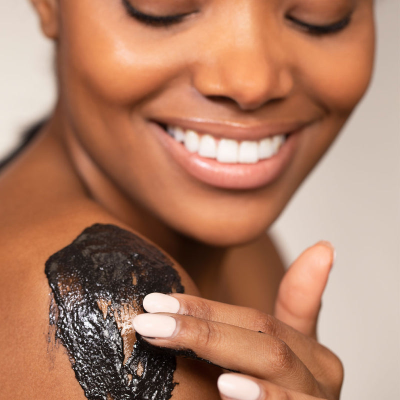
So What Are These Causes of Acne?
1. Tanning
Sorry, summer bunnies. Despite what you may have heard, excessive sun exposure is NOT good for acne, whether you're getting your UV rays from the actual sun or a tanning bed.
Tanning dries up all the natural oils on your skin, sending your sebaceous glands into overdrive. They start producing extra skin oil to rehydrate everything, so you end up going from greasy to dry to extra greasy.
And when all this excess oil starts mixing with dead skin cells and clogging up your pores, you're just a few bacteria away from your next acne breakout.

This one is like a mean joke. Acne already causes us stress, so how can stress also cause our acne?
2. Hormones
Specifically, hormones like cortisol and CRH are both released when you experience chronic or persistent stress.
Cortisol can prompt faster production of both oil and skin cells, two major acne factors. Then CRH comes along and activates inflammation so that your newly clogged pores get extra swollen and red.
3. Lack of Sleep
We know that life sometimes gets the better of us. A big deadline may push you into a frantic all-nighter, or a gripping plot line may keep you glued to the TV until the sun comes up. But going without sleep can contribute to your acne struggles, especially if you do it on the regular.
When you don't get enough rest, your body feels stressed. It starts releasing cortisol and CRH, aka those acne-triggering hormones we just talked about. Sleeplessness can also impact your immune system, making it tougher for you to fight off or heal breakouts.
If you struggle with both acne and insomnia, start by improving your sleep to improve your skin.
4. Traveling
Have you been daydreaming about your next vacation? The places you'll go, the foods you'll eat, the cute shots for your Insta? One thing you probably aren't envisioning: a breakout. Unfortunately, your travel plans may cause just that!
If your vacation itinerary includes plane travel, the low humidity in the aircraft cabin can dry out your skin. Just as with tanning, that dry skin kickstarts a cycle of excess oil production, pore-clogging, and breakouts.
But planes aren't the only threat to your getaway complexion. Even if you prefer boats, trains, or family road trips, acne can flare up from leaning against dirty seats.
And often, travel disrupts our sleep cycle, which we already know is a potential trigger. Just one more thing to love about jet lag.
5. Caffeine
Do you know what else disrupts your sleep cycle? Caffeine.
That's right. Every caffeinated soda that you chug can keep you awake, raise your stress levels, and weaken your immune system.
Worse still, the caffeine itself can make your stress and anxiety skyrocket, as much as doubling your body's stress response. Which, as you can probably guess, means a spike in acne-feeding hormones.
So if you like to mainline coffee or Red Bull, be warned: you may be seeing the fallout from this habit on your face!
(p.s. Coffeeholics may also want to learn about all the other ways that their favorite latte may contribute to their acne...)
6. Smoking (or Vaping)
You already know that smoking isn't good for your health. But did you know that it also isn't good for your skin? It’s become so prevalent that it’s called “Vaping Acne” and it can sometimes be cystic.
In addition to issues like, you know, LUNG CANCER, cigarettes can break down collagen and elastin in your skin, causing premature wrinkles and enlarged pores.
The carcinogens in cigarette smoke also dry out your skin. Your sebaceous glands jump on the problem with increased oil production, starting you down the dangerous, shiny road to more breakouts.
“But I don’t smoke, I vape.”
Okay, I feel you. But vaping also wrecks your skin, thanks to the array of chemicals and metals that you may be breathing in.
Like regular cigarettes, vapes not only end up destroying collagen (hello, wrinkles), but they also trigger inflammation and damage your skin’s defensive barrier. This leaves your complexion vulnerable to bacteria like — wait for it — acne-causing P acnes.

7. Over-Exfoliating
Don't get me wrong, I believe in exfoliating. People with acne-prone skin (like me) especially need to keep their skin cleared, since we may produce 4 or 5 times the usual amount of skin cells.
I use my favorite exfoliating mask at least 2 or 3 times a week, just to keep my face bright and my pores clear!
But you can have too much of a good thing and friends, exfoliating falls right into that category.
To get that fresh look, many exfoliating products rely on acidic formulations or textured ingredients like walnut shards or microbeads. These products come on strong, so it's all too easy to overdo it and irritate your skin, causing dryness, flaking, inflammation, and even bumpy little breakouts!
Remember, your skin should be left feeling plump and hydrated. If exfoliating leaves your face feeling tight or waxy, you've gone too far! You're exposing new layers of skin too quickly and leaving your face vulnerable.
(And if you're looking for a nourishing exfoliant that you can use daily without fear, don't miss our game-changing Illuminating Essence Exfoliating Mask.)
8. Washcloths
Over-exfoliating isn't just about acidic face peels and scratchy microbeads. Even something as simple as a washcloth can scrape your skin's surface, causing it to tear and shred.
Plus, washcloths are notorious breeding grounds for nasty bacteria that you don't want to put on your sensitive, acne-prone face.
As someone who scrubbed with a washcloth every day for a solid decade, it's been amazing to see the difference in my skin since I stopped! So much time and effort wasted…
9. Sports Equipment/Accessories
Hey there, sporty types. Have you noticed a lot of breakouts along your jaw or hairline? Or maybe you get body acne in weirdly specific patches.
My friends welcome to the world of acne mechanica.
Acne mechanica within sports is caused by something smothering and rubbing against your skin, like sports helmets, shoulder pads, headbands, jockstraps (!), etc. So if you're into an activity that involves a lot of equipment, you may be experiencing breakouts from the constant, sweaty friction of that equipment against your skin.
Be sure to always shower ASAP after your workout, and cleanse any areas chafed by your sports gear.

10. Tight Clothing or Accessories
But acne mechanica isn't caused by sports equipment alone. Tight, restrictive clothing can also smother you into breakouts, especially if worn regularly.
Contemplate your wardrobe. Is everything skin-tight? Do you wear a lot of constricting jeans, cinched belts, or old bras that are technically a size too small? Even little things can irritate, like a watch band or choker.
Don't forget anything with straps, like shoulder bags and backpacks. Where possible, avoid wearing or carrying things that cause friction in the same spots.
Just consider it an excuse to mix up your day-to-day look!
11. Glasses
Hands raised if you've ever woken up to blemishes across the bridge of your nose.
✋🏻 ✋🏻 ✋🏻
Even glasses aren't immune from causing acne mechanica. It's unfortunate news for Harry Potter and the rest of us bespectacled heroes.
Though they're pretty small and light, glasses still apply enough pressure against your skin to stimulate your oil glands. And you know the drill from there:
Increased oil → clogged pores → breakouts.
12. Prosthetic Limbs
This one is a little wild, but it makes sense. Prosthetic limbs tend to be very tight where they clamp onto the skin. Plus, they are often worn for long hours, many days in a row. (If not every day!)
It's the perfect opportunity for acne mechanica to rear its malicious head.
Anyone with a prosthesis is advised to cleanse and moisturize their skin diligently. Constant chafing and irritation can already make prosthetic limbs uncomfortable, and adding a breakout into the equation certainly doesn't help matters.
13. Beard Burn
Say it with me now:
AC.👏🏻NE.👏🏻ME.👏🏻CHA.👏🏻NI.👏🏻CA.👏🏻
Yep, even a few smooches with a beardly beau can set off your skin, resulting in irritation and breakouts.
Seriously, though, you get the idea. We won't list every single thing that can cause acne mechanica, or this list will go from 21 items to 21,000.
(Violins! Crutches! Thigh chafing! …No, really!)
14. Hair Removal
Speaking of beards, did you know that acne can be triggered by shaving? Any hair removal. So whether it's keeping your goatee manicured or waxing off a few stray hairs, you'll want to take a second look at your routine.
15. Waxing
Waxers, start by gently cleansing and exfoliating before you wax. This removes dirt, makeup, and dead skin cells that could otherwise clog your wide-open, post-wax pores.
As you're applying the wax, be sure to have clean or gloved hands, and never double-dip your applicator. You want to avoid introducing bacteria to your vulnerable skin.
Afterward, soothe your fresh wax. Use natural, calming products that will deposit nourishment and hydration without clogging or irritating your already sensitive skin. After a facial wax, consider something like our Luminous Complexion Toner to reduce inflammation and help deter bacteria.

16. Shaving
And for our shavers out there, how old and rusty is that razor? It may be introducing bacteria and other contaminants to your skin.
For the closest, most hygienic shave, don’t use a blade that is dull or caked with old shaving gel. Go for a blade that’s clean and keen! Rinse with hot water before and after each use, and be sure to store your razor somewhere dry.
If water isn't enough to remove tiny hairs or residue from your razor after shaving, try a little elbow grease! You can clean the blades with a toothbrush and a cleaning solution like rubbing alcohol, white vinegar, or hydrogen peroxide.
An extra tip for readers with lush facial hair: be careful about indulging in heavy beard oils. Yes, they're hydrating and smell great. But that oil can sink past your hair to the skin beneath, clogging pores and causing stealth pimples beneath your beard.
17. Cell Phones
Don't worry. I'm not suggesting that your cell phone emits acne-causing radio waves or anything like that. The problem here is less about the cell phones themselves, and more about what's all over them: Bacteria.
Think about it — how many weird places does your phone end up throughout the day? Your desk at work, the counter at the bank, the cup holder of your car, your bacteria-mobbed bathroom.
Then you pick up that same phone to make a call and press all that bacteria against your sensitive, acne-prone face.
Even if you're more of a texter than a talker, that filthy phone can spoil your complexion. Its bacteria gets all over your hands, and can then be transferred to your face when you do anything like rub your eye or rest your chin in your palms. Yikes! To give your grungy cell phone a much-needed refresh, quickly rub it down with an alcohol wipe.
18. Pillowcases
There's nothing like the feeling of clean sheets, am I right? They're cool. They're soft. They're not redepositing old dirt, oil, and bacteria onto your sleeping face…At least, not on the first night.
Every time you lie down to rest, your skin is pawning off sweat, skin cells, and other undesirables onto your bed linens — especially your pillow.
Even if you think your skin is squeaky clean, some oil and bacteria remain. To keep your pillowcase free from these invisible aggressors, it needs to be laundered every few days.
Bonus tip: For acne sufferers, the ideal pillowcase is of a breathable fabric like 100% cotton.
19. Makeup Brushes
Much like your bedding, makeup brushes spend a lot of time in contact with your face. Naturally!
But while they are applying foundation, eye shadow, and bronzer, they are also picking up contaminants from your skin.
Over time, your brushes start spreading oil and grime back onto your face, blocking pores and triggering new breakouts...that you end up covering with more makeup.
To keep your brushes and beauty blenders sanitary, clean them every 7 to 10 days. You can buy cleansers specially crafted to clean beauty tools or explore DIY options like dish soap or baby shampoo.
20. Toothpaste
If you've ever had a stubborn breakout around your mouth and chin, you'll know how hard it can be to treat. Even if you've tried a dozen acne treatments, sometimes it Just. Doesn't. Work!
Perhaps you're taking the wrong approach. If all your usual skin-clearing tricks have failed, you may have misdiagnosed the problem.
Sometimes, what looks like a typical acne outburst around your mouth may be a rash called perioral dermatitis. Some have suggested that hyaluronic acid is a fix for this rash, but we have something to say about that – and it’s in the form of intensely hydrating tree growth – the snow mushroom! We wrote an entire article about this mushroom and its benefits on how to use it on acne – just take a look here. (mushroom emoji)
Itchy, irritating, and red, this rash can be caused by factors like cosmetics, birth control pills, or seemingly innocent fluoridated toothpaste.
If you suspect that your breakout is perioral dermatitis, consult a dermatologist to identify and address the root of the problem.
21. Hair Products
When acne strikes, people pay a lot of attention to the makeup and skincare products that might be causing the problem. But not many people think to examine their hair products!
As it turns out, hair products can feed acne by adding to the oil on your skin, especially around your forehead or hairline. When your hair and face come into contact, the hair product can transfer to your skin, contributing to clogged pores and, ultimately, breakouts.
To protect yourself from this situation, style your hair before you put on any makeup. If possible, apply hair products with your hands to control where they end up. (Sorry, spray bottles.)
When you're finished, you can then give your face a quick cleanse to remove any rogue product.
22. Laundry Detergent
Remember back at #16, when I talked about keeping your linens clean? If you are routinely washing all your sheets and towels, then I salute you!
But if your laundry game is on point and you're still getting body-wide breakouts, perhaps your detergent is the problem.
Many detergents are heavy in the chemical department and can be too harsh for sensitive skin. Even after a spin in the dryer, enough residue remains on your laundry to trigger a reaction anywhere from your face to your butt.
Try switching to a detergent that doesn't use any artificial dyes or fragrances, which can interfere with your hormones and make your skin go crazy.
23. Tap Water
This is about the time I want to just bury my head beneath my pillow. Tap water? Seriously?
Alas, yes. Basic, innocuous tap water may be setting off your acne.
Depending on where you live and source your water from, tap water can carry all kinds of skin-irritating substances. We're talking about everything from drying salts and minerals to added chemicals.
Not to mention that tap water can raise the pH of your skin and disrupt its natural defenses!
But how are you supposed to wash your face without water? If only there were options available for quality, rinse-free skincare…like our Luminous Clear Skin Kit!
There are 1001 things out there that might be causing your adult acne, but identifying your triggers is only half the battle. Now you can get to work renewing your skin from its deepest layers!
To help you reach that deep cleanse, our Luminous Clear Skin Kit includes five signature products designed to work in perfect harmony. Together, they clear away breakouts while healing and rejuvenating your complexion.
Brimming with the gentle strength of natural botanicals, this kit has everything you need for a complete skin-clearing routine: a refreshing face mist, a gentle cleanser, a nourishing toner, a rich moisturizer, and our fan-favorite overnight mask.
Alas, there are so many different triggers that can cause you to want to stay home due to feeling insecure, forcing you to decide to binge-watch Netflix instead of going out with friends. I mean, don’t get me wrong, both sound like great Friday nights! But you deserve to be comfortable in your skin and make choices based on what is calling you! Luckily Averr Aglow can address all types of acne, and help to clear acne for good so that on a night out, you can focus on your outfit, your friends, and the fun! And then you’ll know your Averr Aglow products are waiting for you when you get home - standing at attention with their lovely hues, refreshing spritzes, nectars, and face masks, so you can also enjoy a great night’s sleep.
What to Do Next? Try Averr Aglow’s Clear Skin Kit
Tired of feeling lost and confused about what you should do to get clear, smooth skin? Order the Clear Skin Kit.
The Clear Skin Kit contains products specially crafted with the perfect blend of natural ingredients that help soothe and calm red, irritated skin while also clearing up breakouts. If you struggle with sensitive acne/breakout-prone skin, hormonal acne, cystic acne, or rosacea, then you’ll be happy you found this complete routine.
Please understand, that results may vary, we’re not selling you a miracle product and would never try to position or state that you will get a true result in only a few days. In our clinical trials, most users found the most results at the 30-day and then the 56-day mark by sticking with our routine.
What is Averr Aglow®?
Averr means Truth. We have pioneered a revolutionary no-rinse cleansing routine specifically tailored to address problematic skin issues.
Hi, I’m Camille, founder of Averr Aglow, and I help adult women who are battling breakouts and acne get clear skin results like they have never seen before, even if nothing has worked for them in the past.
After battling breakouts for over 16 years, trying every skincare product under the sun, and visiting countless professionals like dermatologists, nutritionists, and hormonal doctors, I finally learned why nothing seemed to work on clearing up my skin, what truly causes breakouts and acne, and EXACTLY what to do to get clear skin results – and I want to help you do the same.
Let me help you! Read my full testimonial here.






